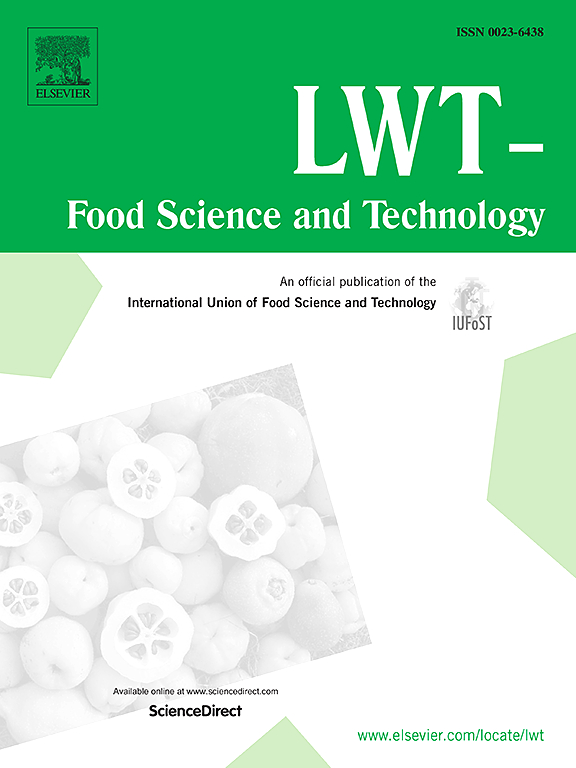Exploring operational parameters and key characteristics in extraction and purification of rubber tree (Hevea brasiliensis) seed protein using the hierarchical Osborne method and ultrafiltration technology
IF 6
1区 农林科学
Q1 FOOD SCIENCE & TECHNOLOGY
引用次数: 0
Abstract
The present study investigated the fractionation and purification of protein fractions in rubber trees (Hevea brasiliensis) seed meal using a combination of the Osborne hierarchical extraction method and ultrafiltration membrane purification technology. The protein content of the meal was measured at 21.5 ± 1.3 g/100g. Analysis revealed the presence of 17 amino acids, including 7 essential amino acids. The predominant protein fractions identified were albumin (8.1 g/100g) and glutelin (16.2 g/100g). Following ultrafiltration purification, the protein fractions exhibited purity levels exceeding 90 g/100g. Molecular weight analysis indicated variability among the four protein fractions, with weights falling within the range of 10–55 kDa. Notably, the rubber seed albumin and globulin displayed higher molecular weights and compact structures compared to gliadin and glutelin, which exhibited larger and looser structures. These findings offer valuable insights into the extraction, purification, and potential utilization of rubber tree seed meal as a potential protein source in food or animal feed applications.

利用分层奥斯本法和超滤技术对橡胶树(Hevea brasiliensis)种子蛋白的提取纯化工艺参数和关键特性进行了探讨
本研究采用奥斯本分级提取法和超滤膜净化技术对橡胶树(Hevea brasiliensis)种子粕中蛋白质组分进行了分离纯化。测定其蛋白质含量为21.5±1.3 g/100g。分析结果显示,含有17种氨基酸,其中包括7种必需氨基酸。鉴定出的主要蛋白质组分是白蛋白(8.1 g/100g)和谷蛋白(16.2 g/100g)。经过超滤纯化后,蛋白质组分的纯度超过90 g/100g。分子量分析表明,四种蛋白质组分之间存在差异,分子量在10-55 kDa之间。值得注意的是,橡胶种子白蛋白和球蛋白比麦胶蛋白和谷蛋白具有更高的分子量和紧凑的结构,而麦胶蛋白和谷蛋白具有更大更松散的结构。这些发现为橡胶树籽粕的提取、纯化和潜在利用提供了有价值的见解,橡胶树籽粕可作为食品或动物饲料中潜在的蛋白质来源。
本文章由计算机程序翻译,如有差异,请以英文原文为准。
求助全文
约1分钟内获得全文
求助全文
来源期刊

LWT - Food Science and Technology
工程技术-食品科技
CiteScore
11.80
自引率
6.70%
发文量
1724
审稿时长
65 days
期刊介绍:
LWT - Food Science and Technology is an international journal that publishes innovative papers in the fields of food chemistry, biochemistry, microbiology, technology and nutrition. The work described should be innovative either in the approach or in the methods used. The significance of the results either for the science community or for the food industry must also be specified. Contributions written in English are welcomed in the form of review articles, short reviews, research papers, and research notes. Papers featuring animal trials and cell cultures are outside the scope of the journal and will not be considered for publication.
 求助内容:
求助内容: 应助结果提醒方式:
应助结果提醒方式:


